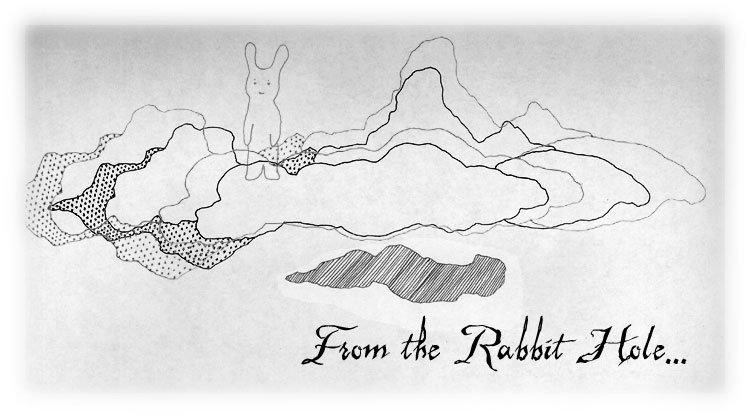
"They are virtuous who close their senses, put away their apsirations and intentions, cast off their intellectual brilliance, and return to a vastness where there is no conscious knowing, meander beyond the dust and dirt, roam in the realm where there is nothing of concern, drink in darkness and spew out light, and harmonize with all beings and all things." (Further Teachings of Lao Tzu, Cleary, p.23)

"Kun is the power of Earth/Space. It is the Primordial Yin that returns each autumn (harvest/nourishment) and flourishes in the dark of winter (stillness). It is a solitary mare roaming in the wilderness (freedom) and then bridled and ornamented to be given as a sacrificial offering (submission). It is also the natural confluence of six rivers. It is associated with the way Nature supports, defines, and nourishes all things without ostentatious gesture. It is the constancy of our primordial mother." (Zhou I - Liu Ming's version, p19)
"The power of Primordial Yin (Great Mother spirit) cannot be grasped, it is like cosmic soup." (Zhou I - Liu Ming's version, p18)
Earth Mother generates an abundance out of the natural goodness and joy of being. There is never a need for lack or deficiency - all deficiency is a miscalculation and presumption of disconnect from the eternal source - supply. Let us simply celebrate the abundance in joy, gratitude and generosity!

"Feng is the prosperity and abundance of a kind that is hard to imagine and even harder to aquire and maintain. when abundance like this occurs we can not pretend that it is the outcome of our personal talents or effort. Feng is, in that sense, mysterious; but we cannot stand still (mourn) in awe. Instead, we should celebrate with a truly open heart (king makes offerings) and be generous (sun at midday).
It expresses the mysterious and fertile generosity of nature. The mention of astronomical and astrological influences in several lines indicates that success is a matter of fate - synchronicity with the cycles of time. Do not waste time feeling unworthy or claim the success if your. Honor all co-factors and reward all co-workers. Celebration and generosity express abundance." (Zhou I - Liu Ming's version, p125)
Entering into a time and space of naturalness and flow (the Way of Earth and the Great Mother of ALL THAT IS), we discover ourselves surrounded by and endless and unimaginable abundance - CELEBRATE IT!
Celebrate it in gratitude and by sharing it (throwing a party) and in acknowledging the unity of all things the flow is furthered and is allowed to live on and through us all.
Entering a space of naturalness, we discover the natural abundance that we are, that ALL is.
ALOHA









